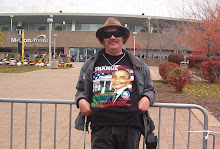In my last post, I sought to suggest the ways in which my novel, Sweetheart of the Lonesome Boulevard, differs significantly from the tradition of post-modern fiction while yet being within that same tradition. I shall now expand upon those suggestions, “putting the warm flesh of example upon the bare skeleton of abstraction,” as one of my characters would put it. Particularly, I wish to comment upon the way in which Sweetheart acknowledges the post-modern world view and yet offers a vision of something that transcends that world view’s limits.
The characters of the novel, especially Dorf, the primary narrator, and the secondary narrators who interrupt and digress from the central line of the plot, experience life as fragmented, disconnected, random, chaotic, and often meaningless. However, I have designed the telling of the story/stories in a way that intimates wholeness, order, pattern, and significance. Some characters, including—in the end—Dorf, can, from time to time, catch glimpses of this order. Some even have a name for it: ‘the Web’, an ambiguous term connoting both the inescapability of a spider web and the beauty of a tapestry. Not even to the reader is ‘the Web’ completely visible, but a sense of its comprehensive grandeur is made available to him or her by means of multiple narration, interconnected symbols, and an immense, historical timeline.
The main narrative thread of the novel consists in Michael “Dorf” Dorfmann’s telling of four significant phases in his life from late adolescence to early middle-age. Throughout this time, Dorf struggles constantly with what he calls ‘lonesomeness,’ his anguished awareness that his intelligence, sensitivity, and self-conscious integrity set him apart even from those for whom he cares most. “We know the least about those we love the most, and the most about those we love the least,” as Dorf’s best friend Randy says, an apothegm which Dorf takes very much to heart.
Indeed, the unknowableness of others pains Dorf, and his lonesomeness often manifests itself as bafflement at what he witnesses and experiences. Why does Shorty, the record-dealer, Dorf’s mentor, refuse to sell a particular album to a very odd young man named Jimmy? Why is Elaine, Dorf’s favorite teacher, so fascinated with the work of a certain obscure poet? What happens to Iris, a college classmate who temporarily disappears? Why does Mr Diggins, an elderly undertaker whom Dorf hardly knows, leave him an inheritance? What was Dorf’s grandfather doing in an abandoned strip-mine when he died of a stroke? Why does Marguerite, the Vietnamese woman with whom Dorf falls in love, cringe and weep when she meets Elaine? Why is Dorf always unnerved when, as he often does, he encounters references to the 19th century frontiersman Harvey Langsam? Why does broadcasting mogul Jimmy Aram—the same would-be customer to whom Shorty had not sold the record—hate Dorf with enough passion to seek to destroy him and everything he values? Loved ones do things which make no sense; near-strangers regard him with strong feelings, which makes even less sense; and so Dorf experiences his world as mostly nonsensical. A very post-modern fellow is Dorf, in so far as he tells his own tale.
However, Dorf is not the only one telling tales. Shorty tells of red-baiting and rock and roll, Elaine of idyllic romance and tragic loss. Frank Lovaleer—a sexually-predatory gospel singer—tells what happened to Iris, and Mr Diggins reveals a connection to Dorf’s life that is more complicated than even Mr Diggins himself realizes. Dorf’s grandfather’s tale of bigotry and murder, Marguerite’s of betrayal and war add further to the unsuspected background of the main narrative. Harvey Langsam’s pioneer yarn provides context and parallels for Dorf’s experience, and the mad ravings of Jimmy Aram put much of what Dorf is unaware in a peculiar perspective.
Taken in sum, these subsidiary tales, these digressions, tell another story altogether, a story that Dorf does not, cannot, know, a story that stretches across two centuries and halfway around the world, and yet which influences, perhaps even determines not only his conscious experience but the manner in which he narrates it. This is the story of ‘the Web’, the vast, patterned interconnectedness of all human lives and human experiences. Dorf’s quest, whether he knows it or not, is to find his place as a lonesome individual within the warp and woof of the Web. The other tales, the alternate story, holds out the hope that, for Dorf, redemption, not from but through, his very lonesomeness, may be possible.
Unlike many post-modern novels that depict, dwell upon, or embody the experiential chaos and apparent meaninglessness of existence, Sweetheart of the Lonesome Boulevard assumes the mysterious reality of a meaningful spiritual dimension. Though this spirituality defies the limits of any particular religion—indeed, Dorf encounters, critiques, and rejects numerous religions—it must, like those religions themselves, be articulated through symbols. In my next post, I shall therefore discuss the major symbolic structures of this novel.
Your comments are always welcome.
Peace,
David P. Van
Saturday, August 22, 2009
Subscribe to:
Post Comments (Atom)


No comments:
Post a Comment